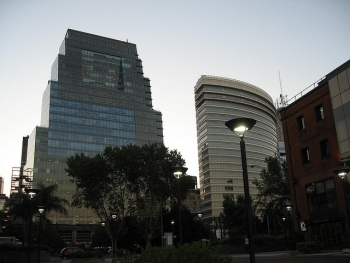Smart Buildings - 5 Reasons Smart Building Technology Isn't Reaching its Potential in the Corporate

While the level of technology, innovation and adoption has increased in the commercial real estate market, that is not the case for corporate real estate. Despite the fact that corporations are one of the largest group of real estate owners and that real estate is a substantial part of a corporation's operating budget, the adoption level of technology to better organize and manage corporate real estate, like smart buildings, is not commensurate.
So why has technology adoption not reached its true potential?
1. Corporate real estate professionals, for the most part, have spent their careers focusing on real estate and not technology. While they may be aware of consumer technology and trends, they do not have strong technology backgrounds, recognizing and understanding how technology could be used strategically to better automate the business functions of a real estate operation.
2. The IT teams in corporations are not typically focused on major tech initiatives that are business drivers of the corporation. ERP's, financial systems, sales and marketing solutions, CRM systems as well as the corporate IT infrastructure (which involves mobile devices, desktops, servers and communications) are the topics that keep IT executives busy. Very rarely are they aware or interested in the needs of the real estate department i.e. development of smart buildings, despite the major opportunities for improvement.
3. Facility managers who keep the real estate of major companies functioning have historically looked at buildings individually and have focused more on mechanical functionality. They have less experience with IT and struggle with understanding how networks and other IT systems pertinent to smart building technology, such as data analytics and business process automation, could positively impact real estate operations from a strategic level.
4. While energy and sustainability have been at the heart of the green movement, closer examination of the goals of these programs show that technology innovation is not as prevalent. While sustainable building products and green roofs are important, significant opportunities are being overlooked. Smart building technology can play a significant role in "turning off the lights", enabling mobile workforces and streamlining facilities, all providing optimum green results.
5. Human Resources, who manage the most important component of a corporation, its people, have traditionally focused on HR functions and not spent enough time considering ramifications to the workforce and worksites once all potential innovations are implemented. As the corporation evolves to a more digital model and the workforce becomes more distributed and connected, HR will have to be more involved in writing policy and assisting in comprehensive change management activities.
The biggest underlying reason that corporations have not yet fully taken advantage of technology, automation and innovation as seen in smart buildings, as it pertains to corporate real estate, facilities and the flexible workspace, is the lack of interdepartmental interaction. Previously, each of these specific departments could function somewhat autonomously. However, as technology evolves, the departmental lines of distinction begin to blur and a glimpse of the new corporate "space" team is beginning to emerge.
The answers to many of the questions raised by this transformational change is discussion, debate and collaboration. The only way this problem gets solved is for professionals from various departments to talk about their changing roles and the impact technology such as smart buildings is having on the entire business process.
